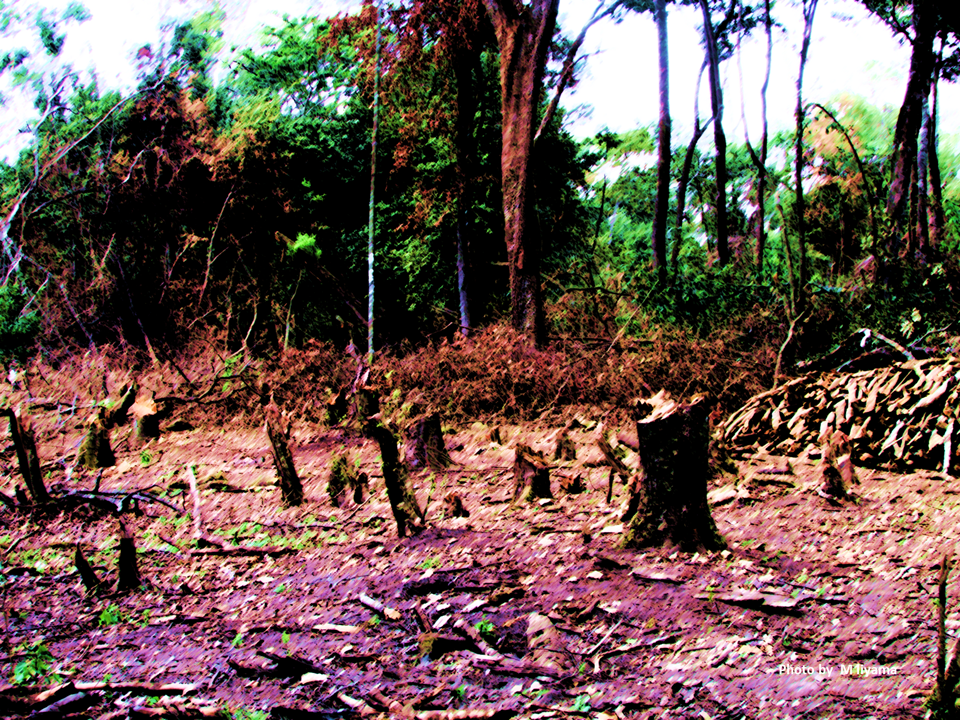Pick Up
1310. Global Forest Carbon Sink Shrinks to 20-Year Low

1310. Global Forest Carbon Sink Shrinks to 20-Year Low
Forests have historically regulated global temperatures by absorbing carbon dioxide (CO2) from the atmosphere and trapping it in trees, roots, and soil. In a typical year, forests and other vegetation absorb approximately 30% of the CO2 emitted by humans from fossil fuel combustion. This is a vital climate service provided almost entirely free by trees around the world, from tropical rainforests to temperate and boreal forests.
However, new analysis by the World Resources Institute's (WRI) Global Forest Watch (GFW) and others reveals that forest fires in 2023 and 2024 reduced forest CO2 absorption much more than usual, weakening their cooling effect. In those years, forests absorbed only a quarter of the usual amount of CO2. Taking into account carbon stored in forest carbon sinks and greenhouse gas losses due to burning, 2023 marked the lowest "forest carbon sink" in over 20 years.
This recent sharp decline is also part of a longer-term downward trend in which the gap between forest carbon emissions and absorption is narrowing. As emissions from deforestation and other forest disturbances increase, the world's forests are at risk of transitioning from carbon sinks to carbon sources. The loss of the world's forest carbon sinks would have devastating consequences for humanity and the planet. Without urgent intervention, forests' carbon absorption capacity will continue to decline, accelerating climate change, increasing the frequency of deadly extreme weather events, and potentially disrupting rainfall patterns that support water and food security.
Based on a quarter-century of data, more than 80% of forest-related emissions are directly attributable to human decisions to cut down trees for all purposes, including pasture, farming, mining, infrastructure expansion, and logging. Over the past 24 years, agriculture has been the leading driver of forest-related emissions, accounting for just over half (53%) of tree cover loss emissions from 2001 to 2024. While forests may be cut down and used for agriculture for several years before regrowing (shifting cultivation), they may also be permanently cleared, losing their carbon sink capacity. Emissions from tree cover loss due to agriculture have been steadily increasing over the past 20 years.
However, in 2023 and 2024, another threat came into the spotlight: wildfires. From the tropical rainforests of South America to the boreal forests of Canada and Russia, fires have been exploding around the world, emitting more than 4 gigatons of greenhouse gases (including carbon trapped in trees, methane from combustion, and nitrous oxide) each year. This is equivalent to releasing one-third of China's annual emissions into the atmosphere. The fires in 2023 and 2024 released 2.5 times the typical annual CO2 emissions.
When emissions from deforestation and absorption from existing and regenerating forests are added together, forests remain a net carbon sink globally, but their size is shrinking. Regional patterns, however, are more nuanced. Some forested areas, including parts of China and the eastern United States, maintain relatively high net carbon sinks. Others, such as the tropical forests of Bolivia and the boreal forests of Canada, have shifted from being net carbon sinks to being net carbon emitters.
Forests are remarkably resilient, but they are subject to biological limits. For forests to continue absorbing carbon from the atmosphere, we need to give them the space and stability they need to function. This means rethinking how we value forests not simply as sources of timber and land, but as life-support systems for the planet. Protecting the world's forests is not a charity, it's a matter of survival.
Contributor: IIYAMA Miyuki, Information Program
